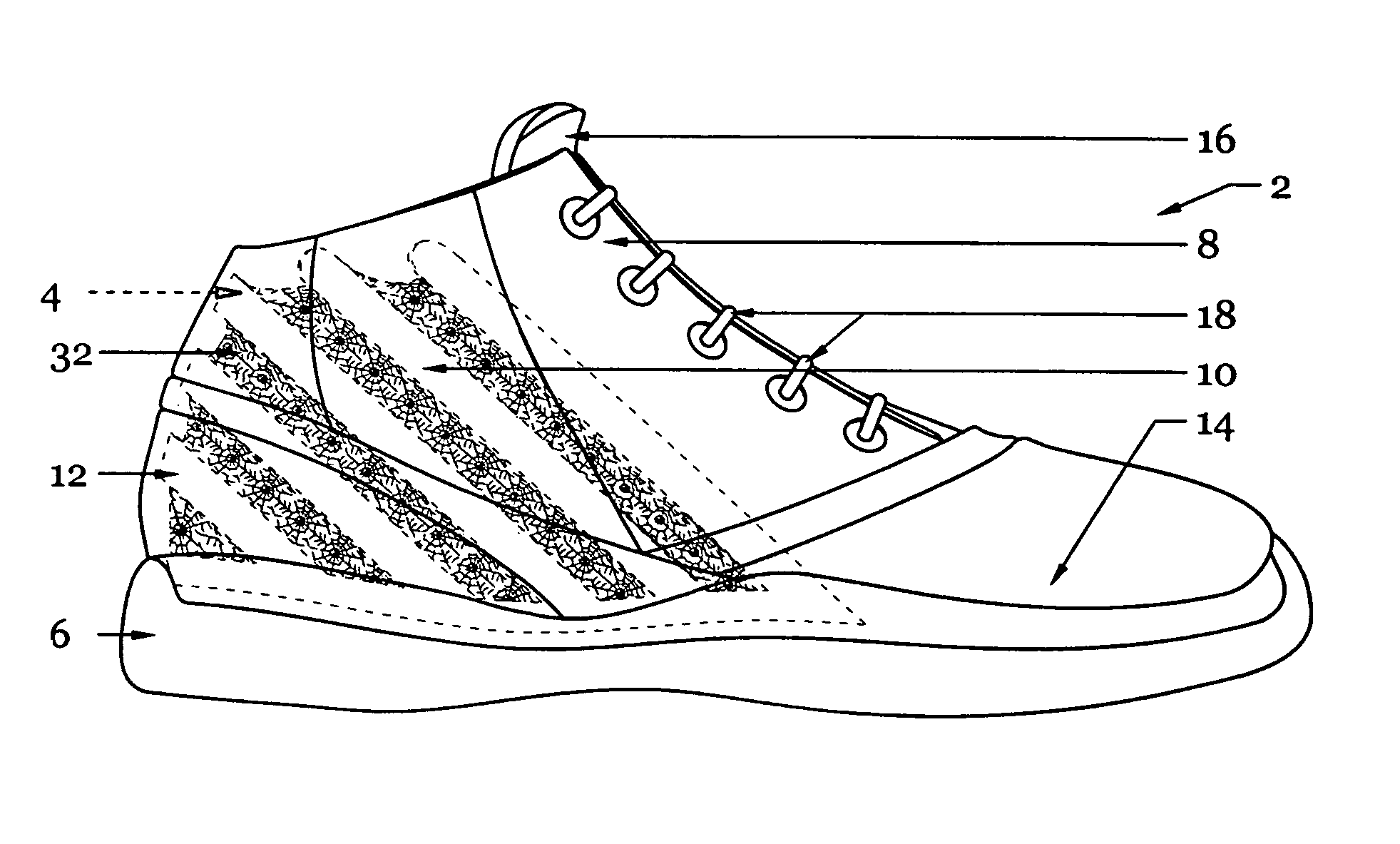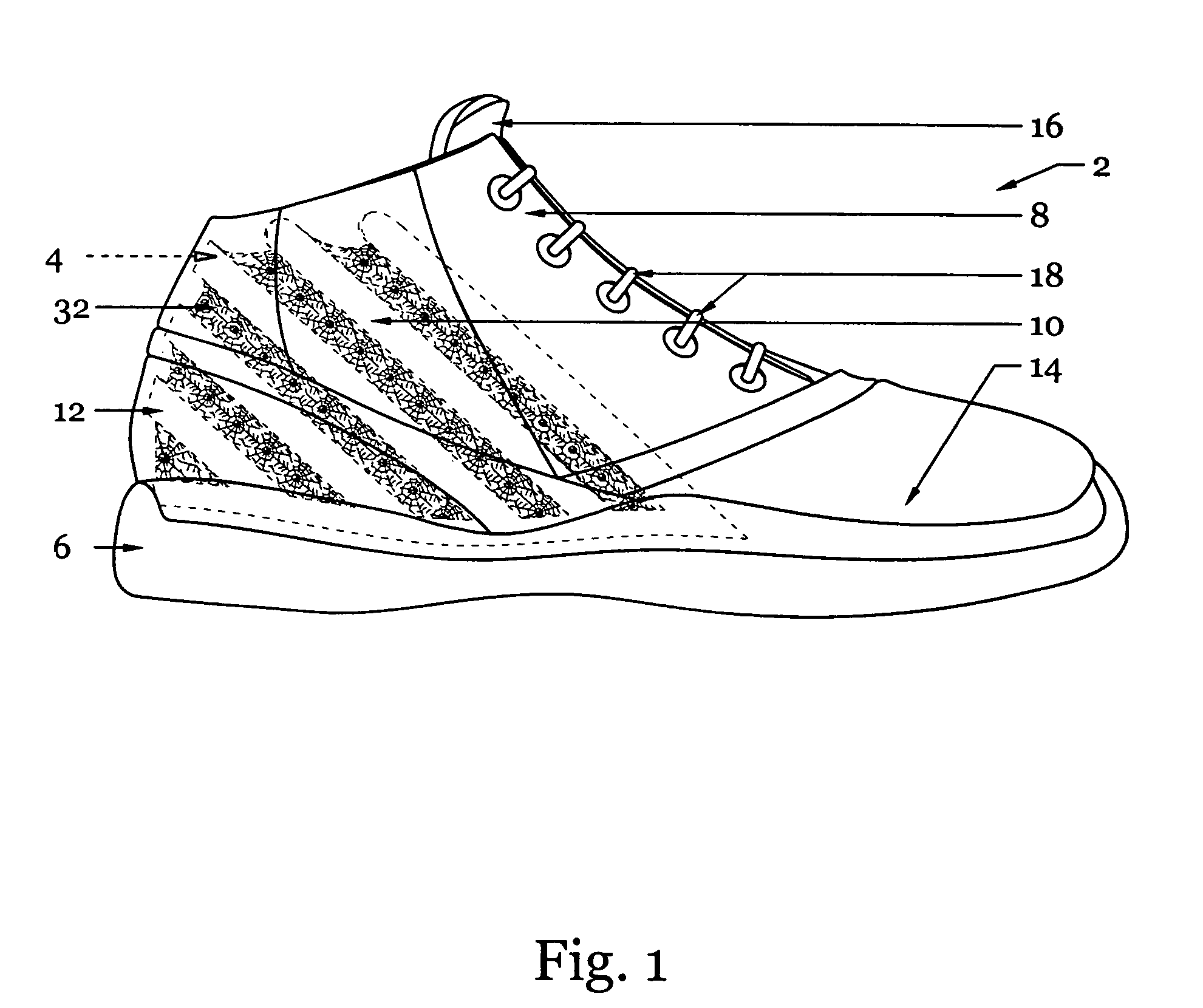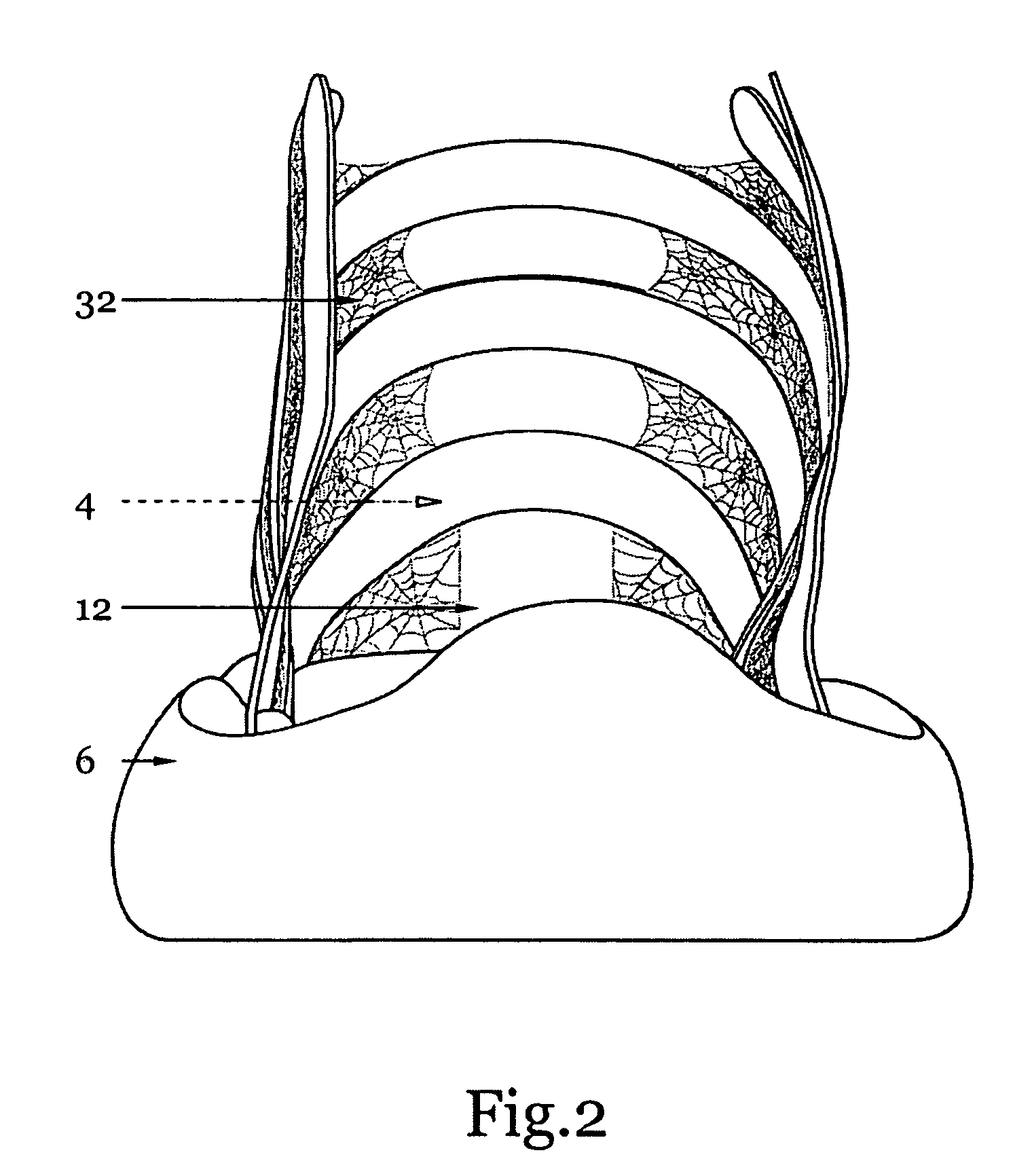Shoe and ankle support with artificial spider web silk
a technology of spider web silk and ankle support, which is applied in the direction of uppers, bootlegs, stiffners, etc., can solve the problems of reducing the risk of ankle injury, and wasting time and money
- Summary
- Abstract
- Description
- Claims
- Application Information
AI Technical Summary
Benefits of technology
Problems solved by technology
Method used
Image
Examples
Embodiment Construction
[0017]FIGS. 1 and 2 shows a conventional athletic shoe 2 which has been modified to incorporate therein the ankle support member 4 according to the invention. As is customary in such footwear, the shoe has a molded elastomeric sole 6, and an upper 8 which has its periphery attached to the sole so that the foot is enclosed by the upper and sole. The upper is formed in a conventional manner and it includes a vamp section 10, a heel portion 12, and a toe portion 14. In the regions which lie laterally of, behind, and medially of the wearer's heel, the upper 8 has inner and outer layers. The shoe has a tongue 16 and laces 18. The ankle support member or frame 4 bound together artificial spider web silk 32.
[0018]The present invention involves the utilization of a novel ankle support member 4 in a shoe to provide extra strength and support to reduce the risk of ankle injuries. The ankle support member 4 is bound together by artificial spider web silk 32 for additional strength and flexibil...
PUM
| Property | Measurement | Unit |
|---|---|---|
| angle of inclination | aaaaa | aaaaa |
| stiffness | aaaaa | aaaaa |
| strength | aaaaa | aaaaa |
Abstract
Description
Claims
Application Information
 Login to View More
Login to View More - R&D
- Intellectual Property
- Life Sciences
- Materials
- Tech Scout
- Unparalleled Data Quality
- Higher Quality Content
- 60% Fewer Hallucinations
Browse by: Latest US Patents, China's latest patents, Technical Efficacy Thesaurus, Application Domain, Technology Topic, Popular Technical Reports.
© 2025 PatSnap. All rights reserved.Legal|Privacy policy|Modern Slavery Act Transparency Statement|Sitemap|About US| Contact US: help@patsnap.com



